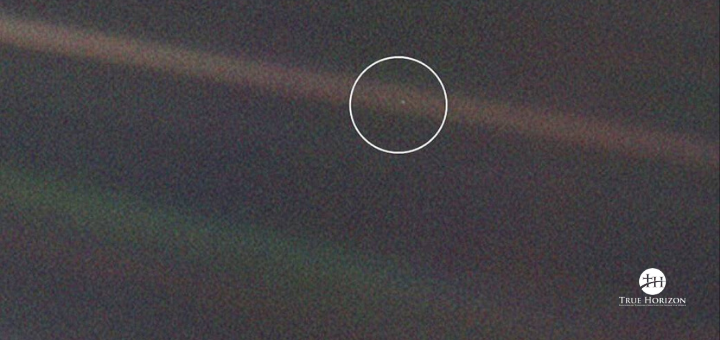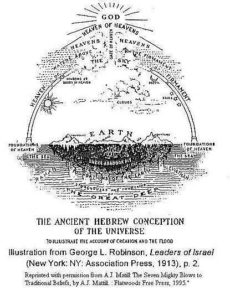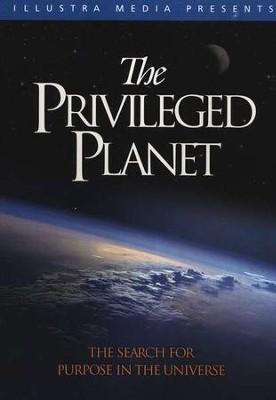On February 14, 1990, the Voyager I spacecraft took the picture you see above from the fringes of our Solar System. The unremarkable little dot inside the circle is the Earth. It would be easy to miss. But don’t let the size of that dot trick you into misinterpreting its significance. Secular scientists demand that size and location confer value on things. But the value of life on Earth depends on its meaning and purpose, not its location. And when you look at it from that point-of-view, the significance of our place in the universe is nothing less than astounding.
A Pale Blue Dot
In his 1994 bestseller, Pale Blue Dot, the late Carl Sagan offered this picture as proof of humanity’s breathtaking insignificance. He put it like this:
“Our posturings, our imagined self-importance, the delusion that we have some privileged position in the Universe, are challenged by this point of pale light. Our planet is a lonely speck in the great enveloping cosmic dark. In our obscurity, in all this vastness, there is no hint that help will come from elsewhere to save us from ourselves … It has been said that astronomy is a humbling and character-building experience. There is perhaps no better demonstration of the folly of human conceits than this distant image of our tiny world.”
Later, images from the Hubble Deep Field 3D telescope led physicist Steven Weinberg to echo Sagan’s sentiments.
“It is hard to realize that [life on Earth] is just a tiny part of an overwhelmingly hostile universe … The more the universe seems comprehensible, the more it also seems pointless.”
The Copernican Principle
The views of these scientists are based on an atheistic presupposition they share. They compare the Earth’s small size to the vastness of the universe. From that, they conclude that our existence must be inconsequential. They’ve been doing it for nearly 400 years. And on the surface, it seems to make sense.
The roots of their appraisal go back to a man named Nicolaus Copernicus. Before Copernicus, most people believed that everything revolved around the Earth — that our home was at the physical center of the universe. This was called “geo-centrism.” And a man named Ptolemy (90-168 AD) was the most famous champion of the idea.
When Copernicus came along he reasoned that the Earth actually revolved around the Sun (“helio-centrism”). By doing so, he seemed to diminish the importance of our world. One hundred years later, Galileo proved that Copernicus was right.
For atheistic scientists since then, this has become a boon. Unseating of the Ptolemaic understanding of the universe meant that the Earth wasn’t at the center of anything. And that meant that those who believed God created it were deluded. This idea has been used to vilify theism and its sympathetic scientists ever since. They call it The Copernican Principle.
But is that what Copernicus’s discovery really did?
 Ptolemy’s World
Ptolemy’s World
Ancient observers like Ptolemy thought the Earth’s place in the universe was best described as being near the bottom of a giant “sump.” As you can see in the adjacent diagram, the ancient Hebrews shared this idea.
On this view, the value/worth of things increases as one moves further “up” into the heavens, away from the sump. For instance, Sheol (a.k.a. “hell”) was a really bad place to go because it sat beneath the Earth. It was a place of death and darkness. That’s where you went when you were cut off from God — to the bottom of the sump.
The Three Heavens
On the ancient Hebrew view, the atmosphere that surrounds us was called the “first heaven.” (As an aside, this is what Jesus was referring to when he said: “the kingdom of heaven is at hand.” He meant that the eternal life God promised us was immediately obtainable right here where we are. We don’t have to go anywhere to find it.)
Just above the Earth was the realm of the planets, Sun, and stars. This was the “second heaven.” The ancients believed the Earth was fixed and that the objects they observed moving in the sky above them were in this second heaven.
Way out beyond the stars and planets was the “third heaven” where God himself lived. When Paul (2 Corinthians 12:1-3) relates his story of being “caught up to the third heaven,” this is what he means. He is claiming that he was (somehow) brought into the very presence of God.
In other words, moving farther from the bottom of the sump increased the value and importance of things.
Copernicus Elevates The Earth
Understanding this completely changes the significance of what Copernicus did. By moving the Earth into the “second heaven,” he was actually elevating it to a more important position in the cosmological hierarchy.
But modern scientists choose to ignore this. They misrepresent the Copernican Principle by insisting that Copernicus’s revision of the Earth’s physical location equates to a diminished view of the importance of man in the cosmos.
But there’s a problem with that. And that is that our most modern scientific discoveries imply that the universe seems to have known we were coming. In fact, it looks suspiciously like our place in the universe was designed to support advanced human life.
The Anthropic Principle
There are hundreds of factors that have to be in place for advanced life to be possible and sustainable on the Earth. Discovering this fact has led scientists of all stripes to label it the Anthropic Principle (anthropos = Greek for “man”). It’s the idea that the universe seems designed to support advanced human life. And it lies in direct opposition to the claims of the Copernican Principle.
Scientists who play up the Copernican Principle have tried to claim that these anthropic observations are nothing but the rumblings of our hopeful imaginations. At best, they are simply a string of amazing coincidences that are easily explained away — by chance.
Multiple Universes
Atheistic scientists have found a way to promote both the utter insignificance of man and the amazing “coincidences” that allow man to be here. They call it the Multiple Universe Hypothesis.
There are several versions of this “theory” but they all share two characteristics. First, there must be a nearly infinite number of universes. Second, they are all different.
This explains away the mountain of evidence for the design of our universe by attributing it all to luck. None of the many universes are really designed. We just live in the one that happened to get all the characteristics needed for life right. In this way, man’s existence descends to the level of pure chance and infinite unimportance. Thus “the Copernican Principle … explains all those ways in which our setting is commonplace [while] the Anthropic Principle accounts for the exceptions.”
The Atheist’s Blind Faith
Please note that those who promote these ideas are basing them on two things. The first is a misrepresentation of Copernicus. The second is about the theoretical existence of other universes that can never be verified.
The first is a falsity. The second is a demonstration of pure blind faith.
And why do they do this?
Because both these serve to deny any purpose for our existence. Ultimately, the scientists who promote these conflicting ideas are using pseudo-scientific evidence to support the presupposition that there is no God.
Divine Implications
The irony here is stunning. Atheistic scientists who propose multiple other universes to dismiss the existence of God do so by offering a near-infinite explanation for the level of design they observe in this one.
I couldn’t agree with them more.
Yes, we live in “a very tiny place in the heavens.” And, yes, we are a “pale blue dot” in those heavens. But while atheists like Weinberg and Sagan have taken our existence here to be a hopelessly brief and insignificant coincidence, there is another way to look at things.
We could see these observations as breathtaking evidence that the universe was created not just with us in mind — but with us as its ultimate purpose.
God created it all. And we are the reason He did it.
Unintentional Accuracy
Copernicus was right, of course. The Earth really does revolve around the Sun. And Ptolemy was wrong about the physical position of our Earth in the Grand Scheme of things. But in another more important sense, Ptolemy was exactly right.
Our most modern scientific evidence tells us that our “pale blue dot” is anything but insignificant. We may not be at the physical center, but the evidence suggests that we are the habitable, observable, and teleological heart of the universe.
And one can hardly comprehend a more valuable or remarkable location for our place in the universe than that.
This DVD, “The Privileged Planet,” and the book by Guillermo Gonzalez and Jay Richards on which it is based, provides a fascinating look at the significance of our place in the universe. The authors’ point is not just that we are in the exact location we need to be in to live and survive. Some of the parameters that allow for that are the very same parameters that have allowed us to discover just how significant we are. I promise you will enjoy it.

 Ptolemy’s World
Ptolemy’s World
One comment